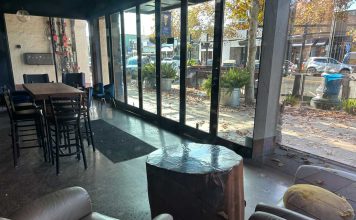Stop and smell the roses. Get a noseful of that jasmine. Take a
whiff of the citrus.Thamfs, but no thamfs. You see, it’s sprigtibe
again and that same old probleb wid … achoo!
Stop and smell the roses. Get a noseful of that jasmine. Take a whiff of the citrus.
Thamfs, but no thamfs. You see, it’s sprigtibe again and that same old probleb wid … achoo!
Yes, it’s allergy season again. Sneezy, sleepy, dopey and grumpy all rolled into one when it comes to allergy sufferers. And our local area is big when it comes to allergies. It’s a “perfect storm” that involves a combination of our commercial agriculture in the area, the pesticides that are used to treat them plus pollen from plants, trees and grasses that cover our valley floor. Add the surrounding hills that help trap the pollen and chemicals, and allergy experts conclude there aren’t too many areas in the country that are worse.
But there are some do’s and don’ts that can make life in the garden more bearable.
For instance, DO your gardening early in the morning if possible when pollen counts are lower. DO keep windows closed to prevent tree and grass allergens from entering your home. DO keep your car windows up while driving. DO wash your hair every night before bed to keep pollen away from your bedding. And DO see a doctor if non-prescription allergy medicines don’t seem to work.
Some DON’TS include DON’T mow lawns or rake leaves particularly in the afternoon when pollen counts are higher. DON’T hang anything out to dry since pollen will stick to it. DON’T drink or smoke since spirits increase mucus production and cigarettes irritate already itchy eyes. And DON’T think nothing can be done medically to help.
Since this is a gardening column, let it be known that one of the main culprits of the hayfever inferno are our very own gardens. By beautifying our home landscapes with pollen-producing trees and shrubs, we have unwittingly contributed to the skyrocketing pollen levels within our immediate surroundings. An olive tree planted in your yard, for example, can expose you to 10 times more pollen than if it were planted a block away. It’s possible to enhance personal health – and, more importantly, simply stop sneezing – by selecting plants that are less likely to cause allergies.
It should be noted that not all plants with fragrant flowers are necessarily full of pollen and, therefore, allergic. Just because plants, such as roses, jasmine, citrus, gardenias and rosemary, have fragrance, doesn’t mean they’re full of pollen. People with allergies tend to have sensitive airways and can be adversely affected by fragrance rather than pollen.
It should also be noted that most colorful and showy flowers are actually “safe” to people with allergies. That’s because they are insect-pollinated and their beautiful petals serve to attract bees and other insects. The pollen grains of colorful flowers can easily and securely attach to bees and other insects, and are not easily picked up by wind currents. Interestingly, innoculous plants like junipers and privets can produce much more pollen than many flowers.
Of course, the biggest clue when it comes to allergy-causing plants, is always yourself. If you sneeze and your eyes water whenever you pass a certain spot in the garden, take a closer look. It just may be that inconspicuous plant in the corner with very few flowers at all.












